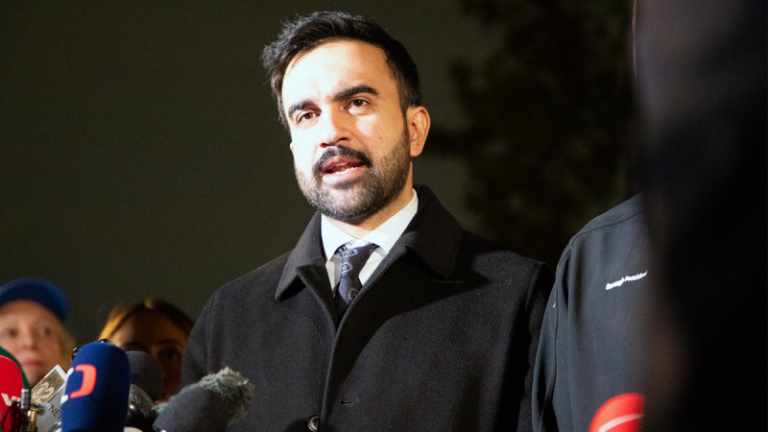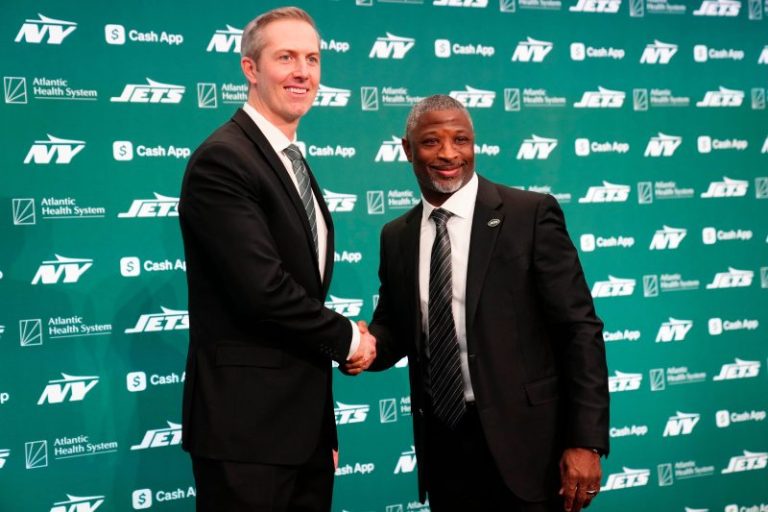The UConn women’s basketball team looked like it was cruising to a blowout victory over Louisville in the season opener Tuesday, but the Cardinals made it interesting down the stretch.
The Huskies, who are ranked No. 1 in USA TODAY Sports women’s basketball coaches poll, started their title defense with a 79-66 win over Louisville at the Armed Forces Classic at the U.S. Naval Academy in Annapolis, Maryland. The reigning champions, however, stumbled down the stretch.
UConn came out red-hot and climbed to a 28-point lead over the Cardinals, but Louisville appeared to settle in during the second half and went on a 13-2 run in the fourth quarter to cut its deficit to 10 points with 2:22 remaining. The Huskies’ experience came through and UConn ended the game on a 6-2 run to ice the game.
Sure, the Huskies didn’t have the best night from beyond the arc, ‘shooting four for a thousand from the 3-point line,’ head coach Geno Auriemma said postgame, referring to his team going a 4-of-26 from 3. But Auriemma said that’s to be expected from a new mix of players and noted he’s ‘happy’ with how the Huskies responded to adversity.
‘I don’t want this to be one of those seasons where even wins feel like losses. That’s stupid. I mean, we won the game,’ said Auriemma, who admitted he wasn’t upset at his team’s lapse in the second half. ‘At some point, I think they have to enjoy the figuring things out for themselves that coach can’t bail us out all the time. So I’m proud of them. I really am. Because not having Paige (Bueckers) is losing three players.’
The Huskies improve to 44-8 all-time in season openers and have won 30 in a row.
AZZI FUDD embraces the hard as she leads UConn into her final season
Sophmore forward Sarah Strong led the way with a game-high 21 points, nine rebounds, five assists, two steals and two blocks in the win. Despite being one rebound away from a double-double, Auriemma said it ‘wasn’t a great game for her,’ which should be a scary thought for the rest of the nation. Senior guard Azzi Fudd added 20 points, while sophomore transfer Kayleigh Heckel finished with 14 points and junior guard KK Arnold had 13 points and seven rebounds.
Louisville’s Laura Ziegler finished with a team-high 16 points and 18 rebounds in the losing effort. Imari Berryand Skylar Joes each added 13 points.
USA TODAY Sports provided live updates throughout the Armed Forces Classic. Here’s what you missed:
End of 3Q: UConn 61, Louisville 40
Louisville and UConn both scored 17 points in the third quarter, but the Cardinals are trailing by 21.
Four Huskies have reached double-digits, including Sarah Strong (15 points), KK Arnold (13 points), Azzi Fudd (12 points) and sophomore transfer Kayleigh Heckel (10 points). Despite having a 21-point lead, the Huskies are struggling to get much going from the 3-point line and are 4-of-23 from beyond the arc.
Skylar Jones is the only player from Louisville to reach double-digits with 11 points off the bench. Laura Ziegler added seven points and has accounted for 16 of Louisville’s 35 total rebounds.
Kayleigh Heckel stats
Sophmore guard Kayleigh Heckel transferred to UConn following one season at USC, where she averaged 6.1 points, 1.9 assists, 1.4 rebounds and 1.3 steals in 34 games (seven starts) during her freshman campaign. Heckel is up to 12 points, two rebounds, one assist and one steal in her first game in a Huskies uniform on Tuesday vs. Louisville.
Halftime: UConn 44, Louisville 23
UConn sophomore forward Sarah Strong came alive in the second quarter, dropping 11 of her 13 points to give the Huskies a 21-point lead over Louisville at halftime. Strong rounded out her stat line with six rebounds, four assists and two blocks. KK Arnold added 13 points in the first half and Azzi Fudd is up to eight points.
The Huskies have been dominant through two quarters. UConn is not only shooting 48.7% from the field compared to 26.5% for Louisville, the Huskies have an advantage in rebounds (27-20), fast break points (11-5) and in the paint (28-8).
Imari Berry and Skylar Jones have a team-high six points each for Louisville.
End of Q1: UConn 25, Louisville 9
UConn junior guard KK Arnold scored nine points in the first quarter, single handedly tying Louisville team after 10 minutes of play. Arnold went 4-of-4 from the field including a 3-pointer. Azzi Fudd added eight points with a pair of 3-pointers. The Huskies are shooting a red-hot 55% from the field and 37.5% from the 3-point line.
Louisville is looking to find its offensive rhythm. The team was held to a dismal 3-of-18 from field (16.7%) and 1-of-6 from the 3-point line. Skylar Jones and Reyna Scott each scored three points off the bench in the first quarter. The Cardinals also gave up four turnovers for eight points.
What time is UConn vs. Louisville?
The UConn Huskies open the season against the Louisville Cardinals on Tuesday, Nov. 4 at 5:30 p.m. ET at Alumni Hall at the U.S. Naval Academy in Annapolis, Maryland.
Paige Bueckers in the building
The Huskies are playing their first game without Paige Bueckers since 2020, but she was spotted in the crowd at Alumni Hall in Maryland to cheer on her former team. Bueckers finished her career at UConn with 2,439 points, the third-most in program history.
“Definitely weird and definitely a surreal feeling of just being in a different position and watching from a different perspective,’ Bueckers told ESPN’s Holly Rowe during the broadcast. ‘Not being yelled at when a UConn game is on. So it’s all different vibes, but I’m very happy to be here and very excited to watch.’
Huskies jump to early 8-0 lead
We’re underway at the U.S. Naval Academy. UConn appeared to pick up right where they left off and got off to a hot start. The Huskies jumped to a 8-0 lead over Louisville, led by a pair of 3-pointers from KK Arnold and Azzi Fudd. The Huskies are 2-for-3 from the 3-point line, while the Cardinals are 0-of-3 from the field and 0-of-2 from 3. Louisville needs to settle in and take better care of the ball. Five of the Huskies eight points come from turnovers.
UConn vs. Louisville score: TV, streaming for Game 4
Date: Tuesday, Nov. 4
Time: 5:30 p.m. ET (2:30 p.m. PT)
Location: U.S, Naval Academy’s Alumni Hall (Annapolis, Maryland)
TV: ESPN
Stream: Fubo, ESPN Unlimited
UConn Huskies starting lineup
(2) KK Arnold
(12) Ashlynn Shade
(21) Sarah Strong
(22) Serah Williams
(35) Azzi Fudd
Louisville Cardinals starting lineup
Head coach: Jeff Walz
(0) Laura Ziegler
(2) Imari Berry
(4) Mackenly Randolph
(11) Elif Istanbulluoglu
(22) Tajianna Roberts
Check out UConn’s championship rings
The ‘Power of Friendship’ lifted the UConn women’s basketball team to the program’s 12th national championship in April and the phrase has been commemorated forever in the team’s new bling.
Nearly seven months after the Huskies defeated South Carolina 82-59 in the 2025 NCAA championship game to win the university’s first title since 2016, Dallas Wings guard Paige Bueckers returned to Storrs, Connecticut, to receive the first national championship ring of her career alongside former teammates.
‘The power of friendship … is the reason that we did win it,’ said Bueckers, who helped design the ring alongside Azzi Fudd and Caroline Ducharme. ‘We just went off of straight vibes and we stuck together through it all.’
UConn women’s basketball roster
Azzi Fudd embraces the hard as she leads UConn into her final season
Azzi Fudd opted to return for her fifth and final year of eligibility to unlock her full potential, at the advice of UConn coach Geno Auriemma. The appreciation of embracing the opportunity highlights Fudd’s maturity as a redshirt senior preparing to step into a leadership role for UConn.
The Huskies, who are ranked No. 1 in USA TODAY Sports women’s basketball coaches poll to start the season for the first time since 2017, are looking to repeat as champion. After the departure of three-time All-American guard Paige Bueckers, the Huskies will rely on Fudd, a quiet and introverted star, to take over.
Preseason women’s college basketball rankings
The defending champion Connecticut Huskies took the No. 1 spot in the initial USA TODAY Sports Coaches Poll, released on Thursday, Oct. 23. UConn may have lost Paige Bueckers to the WNBA, but does return Azzi Fudd and other stars as it looks to become the first repeat champion since winning four straight from 2013-16.
However, the path for UConn will once again feature Dawn Staley and South Carolina, which comes in No. 2. The Gamecocks added firepower with Florida State transfer Ta’Niya Latson, who led the NCAA with 25.2 points per game last season.
USA TODAY Sports Coaches Poll
UConn (28)
South Carolina (3)
Texas
UCLA
LSU
Duke
Oklahoma
North Carolina State
Tennessee
Maryland
North Carolina
TCU
Notre Dame
Mississippi
Michigan
Southern California
Iowa State
Baylor
Louisville
Kentucky
Vanderbilt
Oklahoma State
Iowa
Ohio State
Kansas State
The USA TODAY app gets you to the heart of the news — fast. Download for award-winning coverage, crosswords, audio storytelling, the eNewspaper and more.
This post appeared first on USA TODAY










